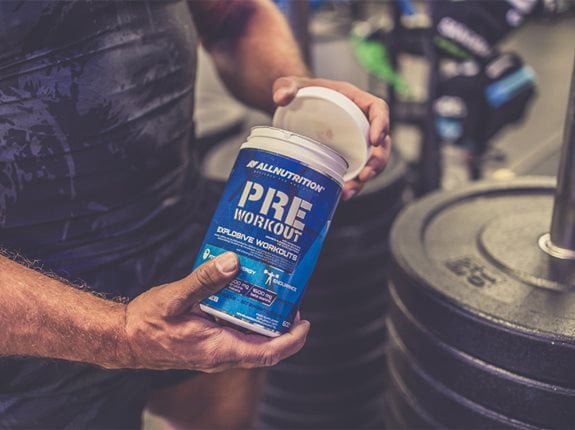na podstawie miedzy innymi:
Persky AM, Brazeau GA, Hochhaus G (2003) Pharmacokinetics of the dietary supplement creatine. Clin Pharmacokinet 42:557-574. Clin Pharmacokinet 42:557-574.
tutaj link do wypowiedzi ellisa:
https://www.sfd.pl/Kreatyna_Inkosport_jak_dawkowac-t299362-s2.html
_________________________________________________
I tutaj fragment ciekawej dyskusji z odnosnikami do badan:
Creatine ethyl ester rapidly degrades to creatinine in stomach acid
Child R and Tallon MJ
Department of Life Sciences, Kingston University, Penrhyn Rd, Kingston-upon-Thames, United Kingdom. University of Northumbria, Sport Sciences, Northumbria University, Northumberland Building, Newcastle upon Tyne, United Kingdom, [email protected]
Creatine ethyl ester (CEE) is a commercially available synthetic creatine that is now widely used in dietary supplements. It comprises of creatine with an ethyl group attached and this molecular configuration is reported to provide several advantages over creatine monohydrate (CM). The Medical Research Institute (CA, USA) claim that the CEE in their product (CE2) provides greater solubility in lipids, leading to improved absorption. Similarly San (San Corporation, CA, USA) claim that the CEE in their product (San CM2 Alpha) avoids the breakdown of creatine to creatinine in stomach acids. Ultimately it is claimed that CEE products provide greater absorption and efficacy than CM. To date, none of these claims have been evaluated by an independent, or university laboratory and no comparative data are available on CEE and CM.
This study assessed the availability of creatine from three commercial creatine products during degradation in acidic conditions similar to those that occur in the stomach. They comprised of two products containing CEE (San CM2 Alpha and CE2) and commercially available CM (Creapure?). An independent laboratory, using testing guidelines recommended by the United States Pharmacopeia (USP), performed the analysis. Each product was incubated in 900ml of pH 1 HCL at 37? +/- 1?C and samples where drawn at 5, 30 and 120 minutes and immediately analyzed by HPLC (UV).
After 30 minutes incubation only 73% of the initial CEE present was available from CE2, while the amount of CEE available from San CM2 Alpha was even lower at only 62%. In contrast, more than 99% of the creatine remained available from the CM product. These reductions in CEE availability were accompanied by substantial creatinine formation, without the appearance of free creatine. After 120 minutes incubation 72% of the CEE was available from CE2 with only 11% available from San CM2 Alpha, while more than 99% of the creatine remained available from CM.
CEE is claimed to provide several advantages over CM because of increased solubility and stability. In practice, the addition of the ethyl group to creatine actually reduces acid stability and accelerates its breakdown to creatinine. This substantially reduces creatine availability in its esterified form and as a consequence creatines such as San CM2 and CE2 are inferior to CM as a source of free creatine.
Kre-alkalyn? supplementation has no beneficial effect on creatine-to-creatinine conversion rates.
Tallon MJ and Child R
University of Northumbria, Sport Sciences, Northumbria University, Northumberland Building, Newcastle upon Tyne, United Kingdom, Department of Life Sciences, Kingston University, Penrhyn Rd, Kingston-upon-Thames, United Kingdom. [email protected]
All American Pharmaceutical and Natural Foods Corp. (Billings, MT, USA) claim that Kre-alkalyn? (KA) a "Buffered" creatine, is 100% stable in stomach acid and does not convert to creatinine. In contrast, they also claim that creatine monohydrate (CM) is highly pH labile with more than 90% of the creatine converting to the degradation product creatinine in stomach acids. To date, no independent or university laboratory has evaluated the stability of KA in stomach acids, assessed its possible conversion to creatinine, or made direct comparisons of acid stability with CM.
This study examined whether KA supplementation reduced the rate of creatine conversion to creatinine, relative to commercially available CM (Creapure?). Creatine products were analyzed by an independent commercial laboratory using testing guidelines recommended by the United States Pharmacopeia (USP). Each product was incubated in 900ml of pH 1 HCL at 37? +/- 1?C and samples where drawn at 5, 30 and 120 minutes and immediately analyzed by HPLC (UV) for creatine and creatinine.
In contrast to the claims of All American Pharmaceutical and Natural Foods Corp., the rate of creatinine formation from CM was found to be less than 1% of the initial dose, demonstrating that CM is extremely stable under acidic conditions that replicate those of the stomach. This study also showed that KA supplementation actually resulted in 35% greater conversion of creatine to creatinine than CM. In conclusion the conversion of creatine to creatinine is not a limitation in the delivery of creatine from CM and KA is less stable than CM in the acid conditions of the stomach.
"Pharmacokinetics of the Dietary Supplement Creatine"
Adam M. Persky,1 Gayle A. Brazeau2 and G?nther Hochhaus1
1 Department of Pharmaceutics, College of Pharmacy, University of Florida, Gainesville,
Florida, USA
2 Department of Pharmacy Practice and Pharmaceutics, State University of New York at
Buffalo, Amherst, New York, USA
"First, the rate of formation of the degradation product, creatinine, is increased in the presence of acid and therefore accelerated degradation is possible in the lower pH of the stomach. However, creatine degradation to creatinine occurs at its maximal rate at pH 3-4. The degradation half-lives for the conversion of creatine to creatinine at pH values 1.4, 3.7 and 6.8 are 55, 7.5 and 40.5 days, respectively. At these rates, less than 0.1g of a 5g dose would be lost in 1 hour. Therefore, the conversion to creatinine in the gastrointestinal tract is probably minimal regardless of transit time.
Life Sci. 1999 Oct 29;65(23):2463-70.
Acute creatine ingestion in human: consequences on serum creatine and creatinine concentrations.
Schedel JM, Tanaka H, Kiyonaga A, Shindo M, Schutz Y.
Institute of Physiology, Faculty of Medicine, Lausanne University, Switzerland.
[email protected]
The aim of the study was to explore the effect of an acute dose of creatine (Cr) ingestion on serum Cr and serum creatinine (Crn) concentrations. Sixteen healthy subjects ingested a single dose of Cr (20 g) followed by the measurement of serum Cr and Crn concentration for 3 h up to a maximum of 6 h (n=6). In response to Cr ingestion a large rise in serum Cr concentration was observed (by 50 folds) occurring approximately 2 1/2h after the ingestion (peak value of 2.17 +/- 0.66 mmol x l(-1)). We also found a moderate but significant rise in serum Crn concentration averaging 13 % after 3 h (peak value at 99.5 +/- 10.5 micromol x l(-1)). A dose response curve obtained in two case studies, in whom different doses of Cr were ingested (0, 2.5, 5, 10, 15, 20 g and 0, 10, 20, 30 g), showed that serum Cr concentration as well as the peak time increased linearly with Cr ingestion. In addition, acute Crn ingestion (5 g) resulted in a substantial increase in serum Crn concentration (by 10 folds) but led to a minor rise in serum Cr concentration (by 2 folds). These results suggest that when acute doses of Cr are ingested in humans, the degree of conversion of exogenous Cr to Crn in the stomach and the gut can be considered as negligible following the first 6 h of ingestion. However, further studies are required to explore the prolonged effect of Cr on Crn metabolism.
PMID: 10622230 [PubMed - indexed for MEDLINE]
pzdr
Zmieniony przez - faftaq w dniu 2009-10-04 21:04:37











